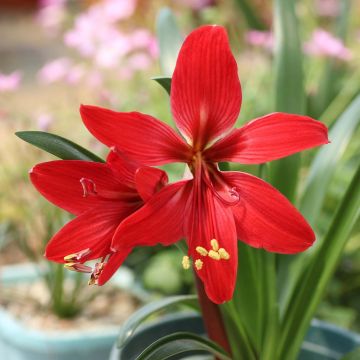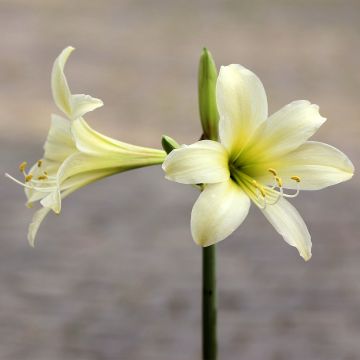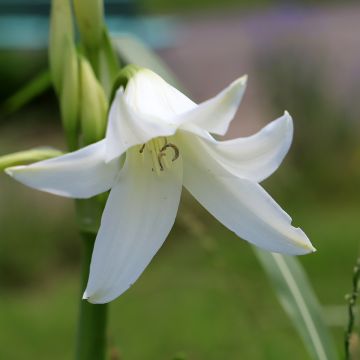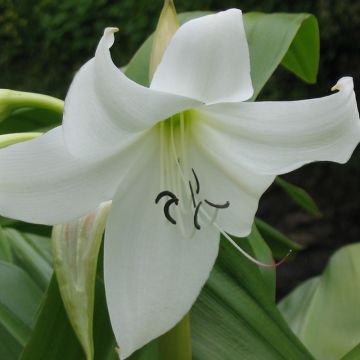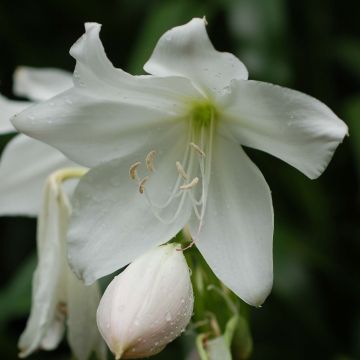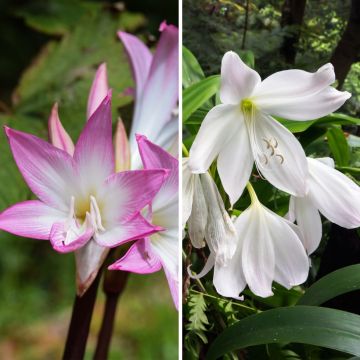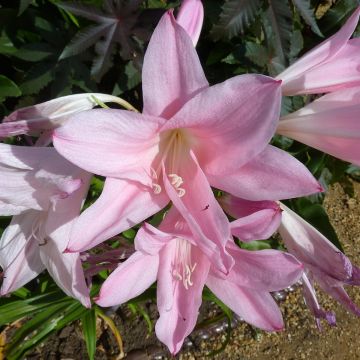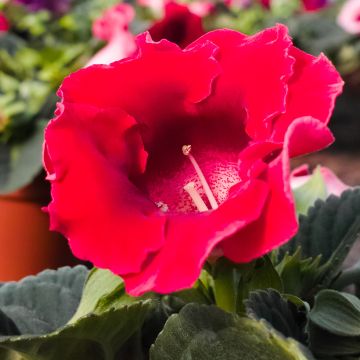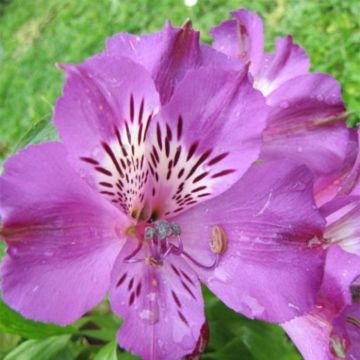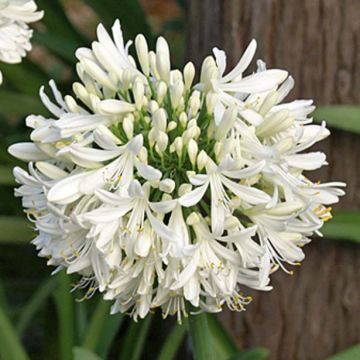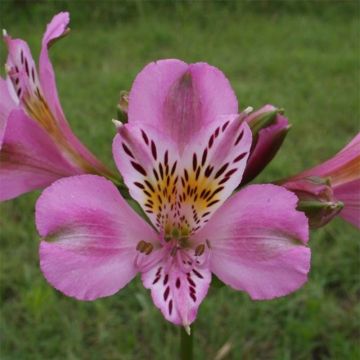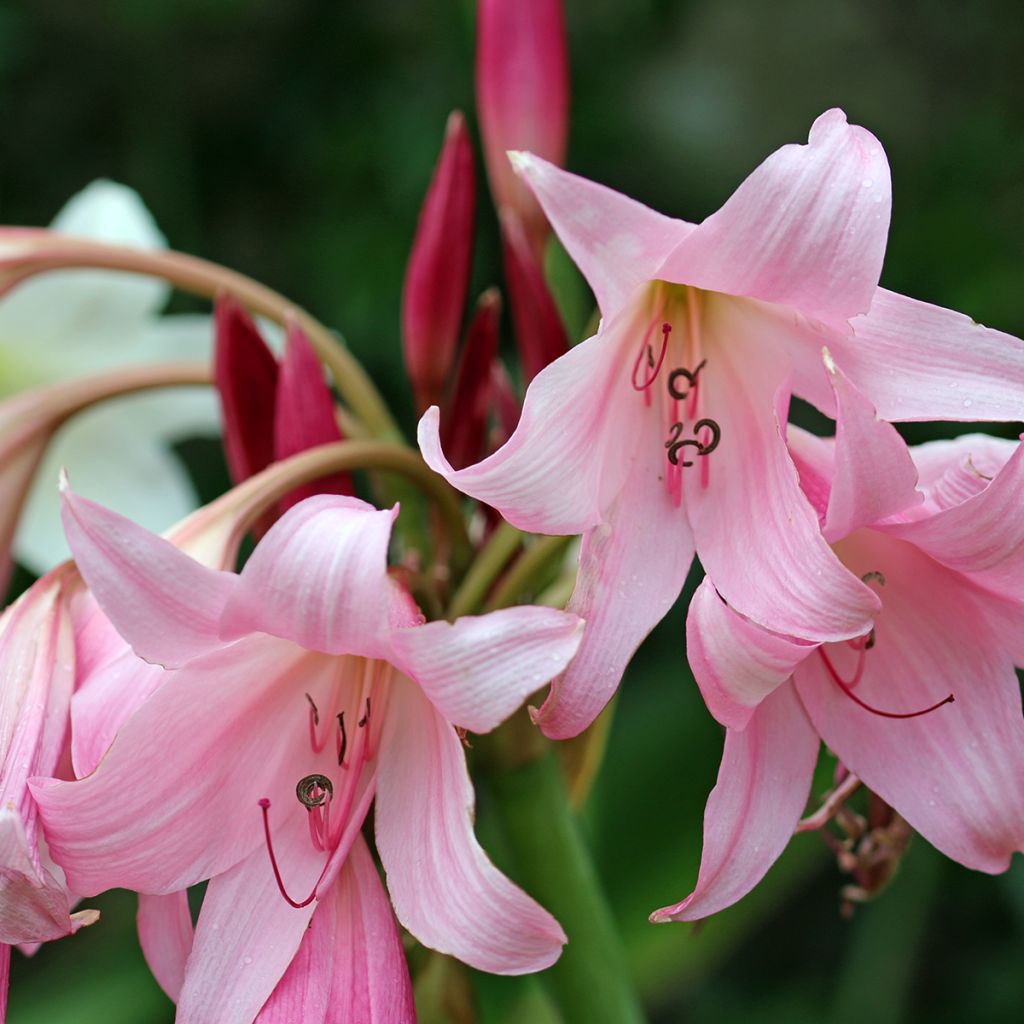

Crinum x powellii Roseum
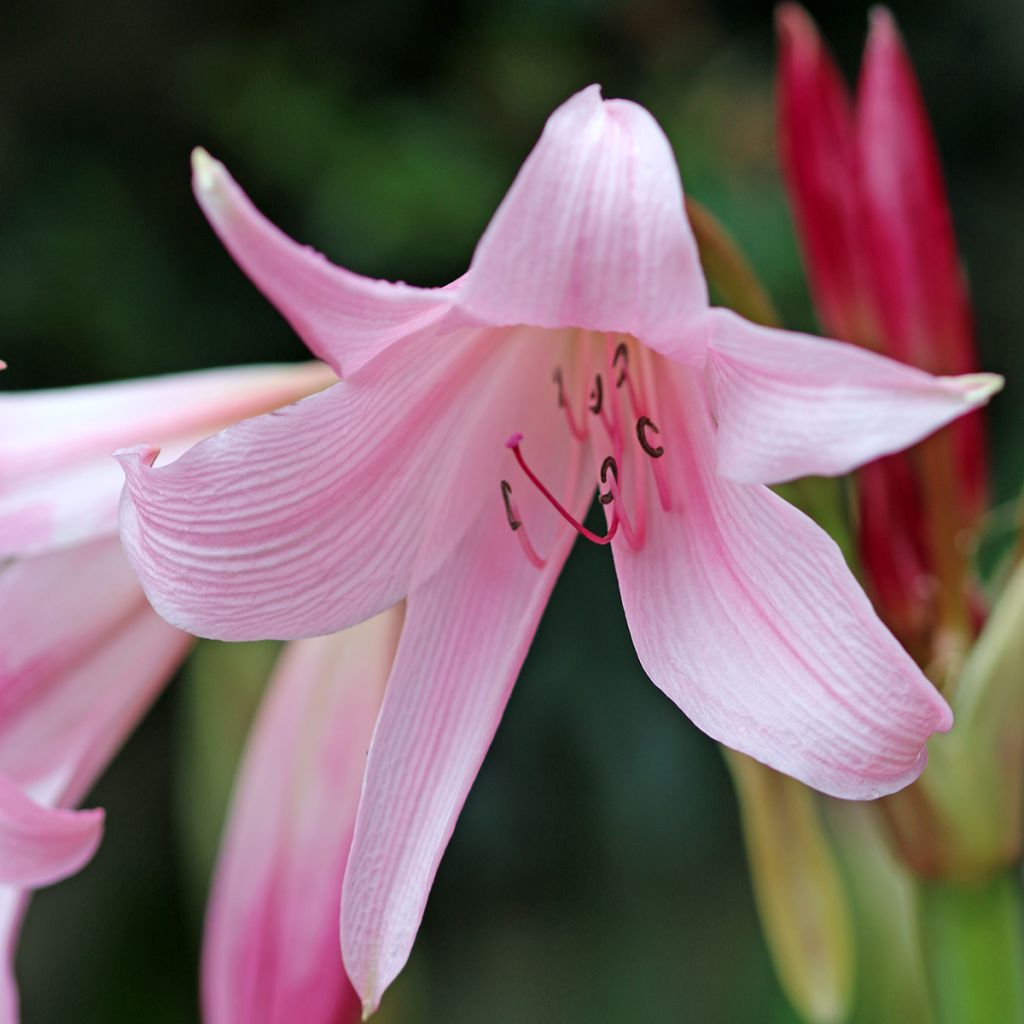

Crinum x powellii Roseum
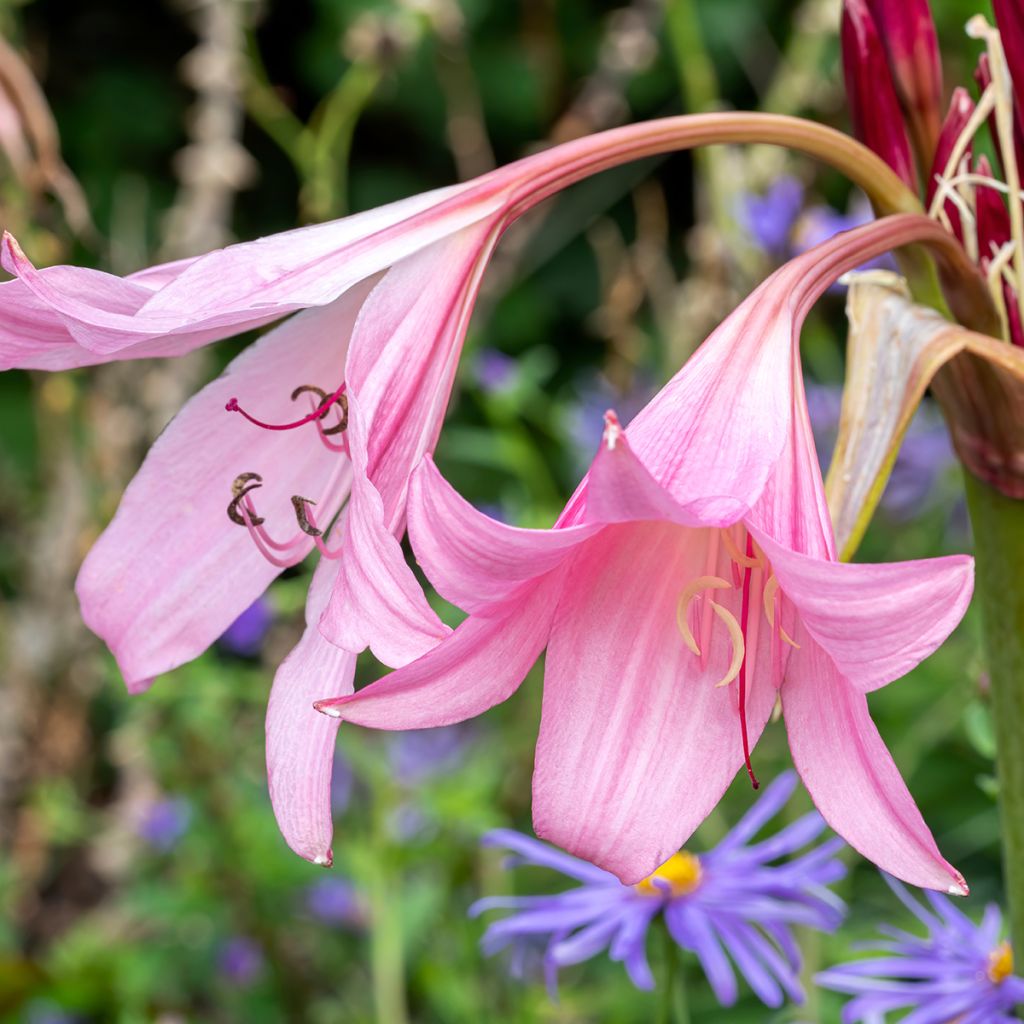

Crinum x powellii Roseum
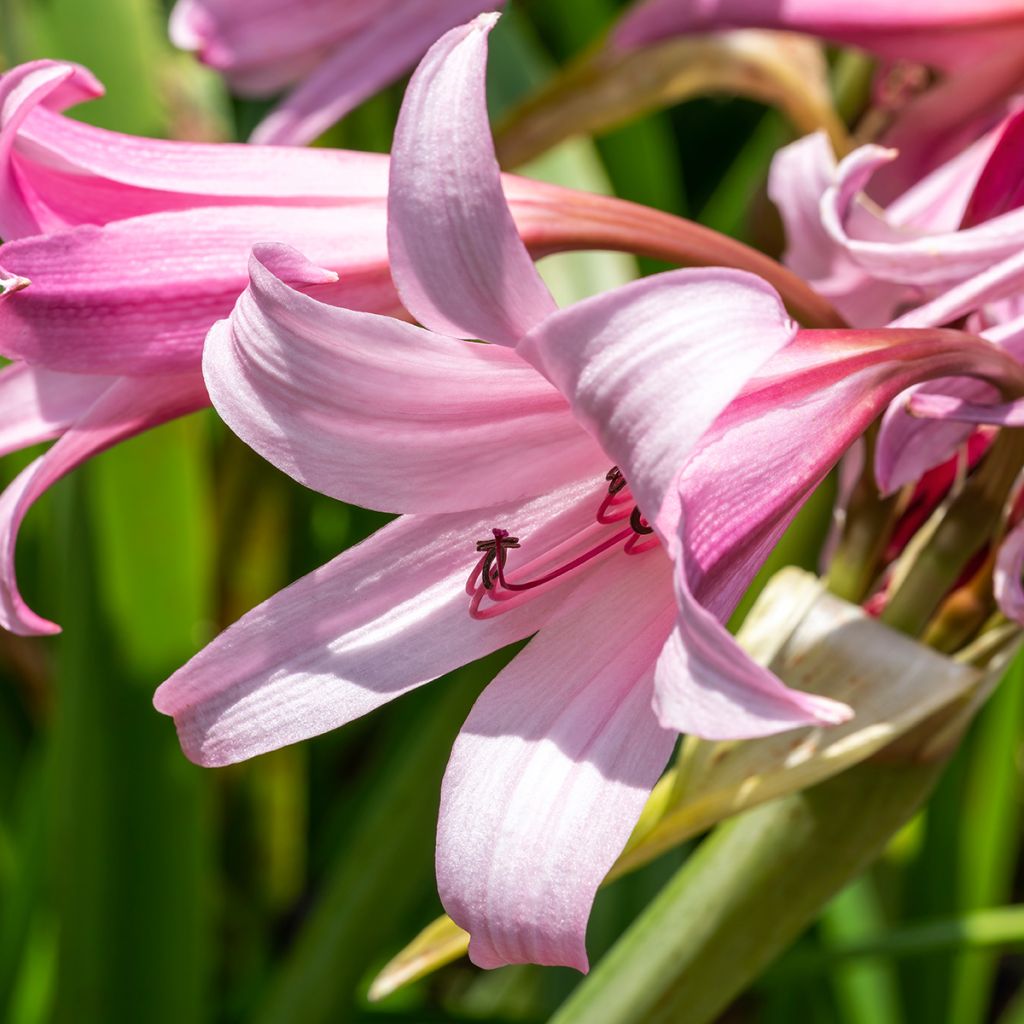

Crinum x powellii Roseum
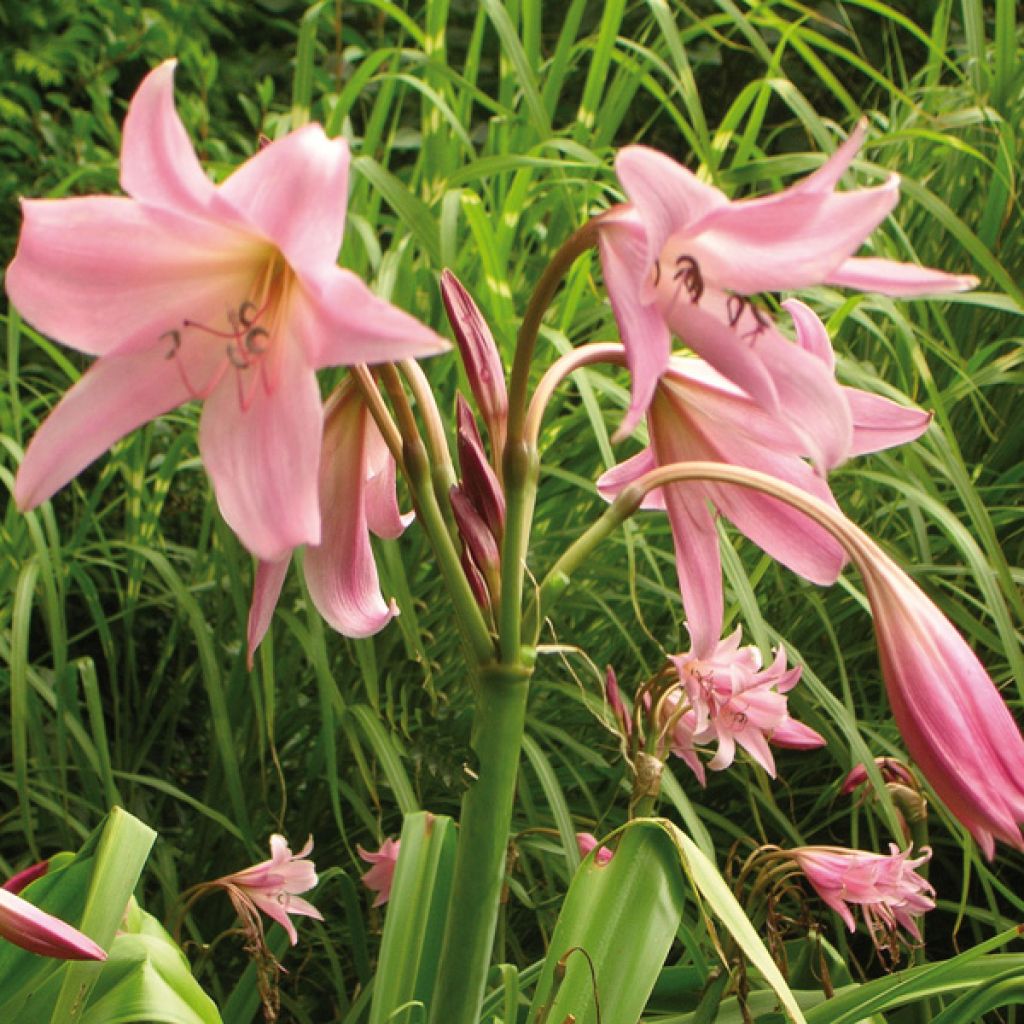

Crinum x powellii Roseum
Crinum x powellii Roseum
Crinum x powellii Rosea
Powell's Cape lily, Swamp lily
This item cannot be shipped to the selected country
Delivery charge from €5.90
More information
Schedule delivery date,
and select date in basket
This plant carries a 6 months recovery warranty
More information
We guarantee the quality of our plants for a full growing cycle, and will replace at our expense any plant that fails to recover under normal climatic and planting conditions.
From €5.90 for pickup delivery and €6.90 for home delivery
Express home delivery from €8.90.

Does this plant fit my garden?
Set up your Plantfit profile →
Description
Crinum x powellii 'Roseum' is undoubtedly the most easily cultivated swamp lily under our climates. This magnificent hybrid bulbous plant takes its time to establish itself, but the gardener's patience will be rewarded with a stunning and spectacular pink flowering. From summer to autumn (depending on the climate), tall flower stalks emerge from a clump of long ribbon-like leaves. The stalks carry up to 15 pink flowers resembling those of amaryllis. Despite its exotic appearance, it is hardy when grown in well-drained soil. The plant grows over time to become truly majestic. Provide a carpet of iberis, cerastium, or alyssum to fill the space left in winter.
Crinum x powellii is a horticultural hybrid created in England in the 19th century. It is the result of crossing two South African species, C. bulbispermum and C. moorei. All these plants belong to the Amaryllidaceae family. Its growth is quite slow. The flowering, which can appear on relatively young plants, will reach its full potential after about 5 years of cultivation. This plant spreads through underground bulblets. Eventually, it can occupy 80 cm (32in) to 1m (3ft) of space on the ground and will bear its flowers at 80cm (32in) above the ground.
The 'Roseum' form distinguishes itself with its more pronounced pink flowering and more open flowers when fully bloomed. The plant develops in clumps from a large pear-shaped bulb, terminated by a neck formed by the overlapping of the base of the leaves. This reserve organ can eventually reach a diameter of 15cm (6in). The foliage develops in spring. It consists of long, flexible ribbon-like leaves with parallel veins, of a light and vivid green. Each leaf can measure up to 80cm (32in) to 1.2m (4ft) in length. They are sheathing at the base, arranged all around a central axis, which distinguishes the crinum from its cousin, Amaryllis belladonna, whose leaves are arranged in 2 ranks. Flowering generally begins in late summer, in August-September. Each mature bulb produces 2 to 3 flower stalks, on average 80cm (32in) tall. Each flower stalk carries an umbel of up to 15 trumpet-shaped, flared flowers, 10 to 13cm (4 to 5in) long and wide. Each flower is composed of 6 slightly soft petals, candy pink in colour, surrounding a prominent cluster of stamens. Their fragrance is light, with hints of vanilla and orange. Crinum roots very deeply in the soil and does not like to be disturbed.
Its bulb can withstand -12°C (10.4°F) with protective mulch. It can therefore be grown in the ground in many regions if care is taken to choose a warm and sheltered exposure and to plant it in well-drained soil that is not too wet in winter. Planted at the base of a south-facing wall in cooler regions is ideal. In milder regions, it will be spectacular in a large bed, in the company of agapanthus, daylilies, and phormium. It will also look splendid on the banks of a water feature, with dierama, or Gomphostigma virgatum 'White Candy', for example. Since its vegetation disappears in winter, the empty space can be filled with iberis, for example. Narcissus or snowdrops can also be placed at its base. It adapts well to cultivation in a large pot, which allows it to be stored in winter in our coldest regions.
Report an error about the product description
Crinum x powellii Roseum in pictures


Plant habit
Flowering
Foliage
Botanical data
Crinum
x powellii
Rosea
Amaryllidaceae
Powell's Cape lily, Swamp lily
Cultivar or hybrid
Other Amaryllis and Crinums
Planting and care
It loves rich, deep and moist soil during its growth period. It thrives in a sunny location, but can tolerate partial shade. In cool regions, it is best to plant it at the base of a south-facing wall. Dig a deep hole of 60cm (24in), as this bulb will establish strong and deep roots over time. Once it is planted, avoid disturbing it. In milder regions, it can also be planted near a pond in moist soil. In any case, choose a sheltered location to protect it from the wind. Plant the base of the bulb at a depth of 15 to 20cm (6 to 8in), with the 'neck' appearing at the surface of the soil. Space the bulbs 40 to 50cm (16 to 20in) apart. The soil should be loose, well-drained, and enriched with compost. In regions with harsh winters, provide a thick layer of leaves or straw. In regions with dry summers, mulch to retain moisture and water regularly. In a warm and cool location, the bulb will establish roots and should be able to flower within two to three years. Trim the foliage after the first frost. Protect young shoots from gastropods. If necessary, manually remove mealybugs with a cotton ball soaked in alcohol.
Planting period
Intended location
Care
-
, onOrder confirmed
Reply from on Promesse de fleurs
Bulbs to grow in pots
Haven't found what you were looking for?
Hardiness is the lowest winter temperature a plant can endure without suffering serious damage or even dying. However, hardiness is affected by location (a sheltered area, such as a patio), protection (winter cover) and soil type (hardiness is improved by well-drained soil).

Photo Sharing Terms & Conditions
In order to encourage gardeners to interact and share their experiences, Promesse de fleurs offers various media enabling content to be uploaded onto its Site - in particular via the ‘Photo sharing’ module.
The User agrees to refrain from:
- Posting any content that is illegal, prejudicial, insulting, racist, inciteful to hatred, revisionist, contrary to public decency, that infringes on privacy or on the privacy rights of third parties, in particular the publicity rights of persons and goods, intellectual property rights, or the right to privacy.
- Submitting content on behalf of a third party;
- Impersonate the identity of a third party and/or publish any personal information about a third party;
In general, the User undertakes to refrain from any unethical behaviour.
All Content (in particular text, comments, files, images, photos, videos, creative works, etc.), which may be subject to property or intellectual property rights, image or other private rights, shall remain the property of the User, subject to the limited rights granted by the terms of the licence granted by Promesse de fleurs as stated below. Users are at liberty to publish or not to publish such Content on the Site, notably via the ‘Photo Sharing’ facility, and accept that this Content shall be made public and freely accessible, notably on the Internet.
Users further acknowledge, undertake to have ,and guarantee that they hold all necessary rights and permissions to publish such material on the Site, in particular with regard to the legislation in force pertaining to any privacy, property, intellectual property, image, or contractual rights, or rights of any other nature. By publishing such Content on the Site, Users acknowledge accepting full liability as publishers of the Content within the meaning of the law, and grant Promesse de fleurs, free of charge, an inclusive, worldwide licence for the said Content for the entire duration of its publication, including all reproduction, representation, up/downloading, displaying, performing, transmission, and storage rights.
Users also grant permission for their name to be linked to the Content and accept that this link may not always be made available.
By engaging in posting material, Users consent to their Content becoming automatically accessible on the Internet, in particular on other sites and/or blogs and/or web pages of the Promesse de fleurs site, including in particular social pages and the Promesse de fleurs catalogue.
Users may secure the removal of entrusted content free of charge by issuing a simple request via our contact form.
The flowering period indicated on our website applies to countries and regions located in USDA zone 8 (France, the United Kingdom, Ireland, the Netherlands, etc.)
It will vary according to where you live:
- In zones 9 to 10 (Italy, Spain, Greece, etc.), flowering will occur about 2 to 4 weeks earlier.
- In zones 6 to 7 (Germany, Poland, Slovenia, and lower mountainous regions), flowering will be delayed by 2 to 3 weeks.
- In zone 5 (Central Europe, Scandinavia), blooming will be delayed by 3 to 5 weeks.
In temperate climates, pruning of spring-flowering shrubs (forsythia, spireas, etc.) should be done just after flowering.
Pruning of summer-flowering shrubs (Indian Lilac, Perovskia, etc.) can be done in winter or spring.
In cold regions as well as with frost-sensitive plants, avoid pruning too early when severe frosts may still occur.
The planting period indicated on our website applies to countries and regions located in USDA zone 8 (France, United Kingdom, Ireland, Netherlands).
It will vary according to where you live:
- In Mediterranean zones (Marseille, Madrid, Milan, etc.), autumn and winter are the best planting periods.
- In continental zones (Strasbourg, Munich, Vienna, etc.), delay planting by 2 to 3 weeks in spring and bring it forward by 2 to 4 weeks in autumn.
- In mountainous regions (the Alps, Pyrenees, Carpathians, etc.), it is best to plant in late spring (May-June) or late summer (August-September).
The harvesting period indicated on our website applies to countries and regions in USDA zone 8 (France, England, Ireland, the Netherlands).
In colder areas (Scandinavia, Poland, Austria...) fruit and vegetable harvests are likely to be delayed by 3-4 weeks.
In warmer areas (Italy, Spain, Greece, etc.), harvesting will probably take place earlier, depending on weather conditions.
The sowing periods indicated on our website apply to countries and regions within USDA Zone 8 (France, UK, Ireland, Netherlands).
In colder areas (Scandinavia, Poland, Austria...), delay any outdoor sowing by 3-4 weeks, or sow under glass.
In warmer climes (Italy, Spain, Greece, etc.), bring outdoor sowing forward by a few weeks.

































